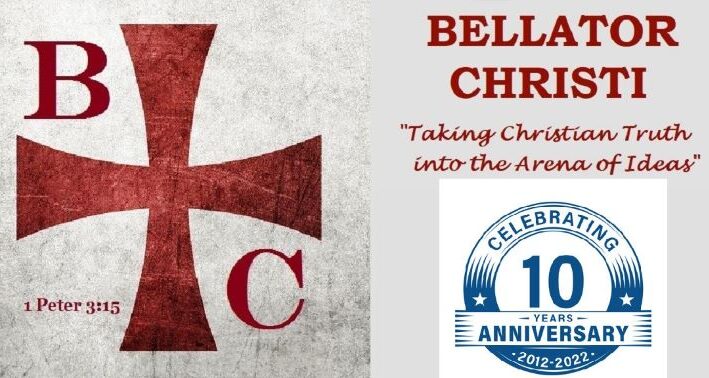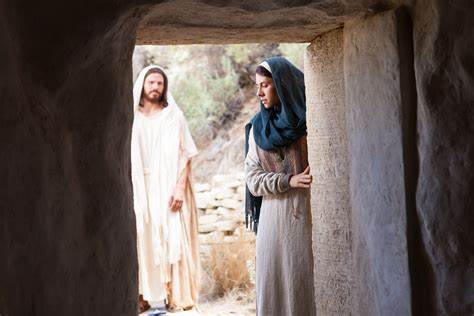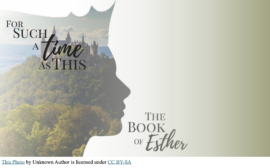By: Brian G. Chilton | March 29, 2021
Historians use various methodologies to determine the credibility of a historical story. One criterion is called the “criterion of multiple attestation.”[1] Reginald Fuller calls the criterion the “cross-section method.”[2] The criterion states that a story is authenticated if it is repeated in more than one source. As noted in a previous article, historian Paul Meier indicates that two or three sources render a historical fact “unimpeachable.”[3] Thus, it must be asked, how many early sources mention the resurrection of Jesus? Amazingly, nine early sources speak of the resurrection of Jesus.
Source #1: The Gospel of Matthew
The Gospel of Matthew serves as a source for the resurrection. Critical scholars date the material of the Gospel to AD 70. However, good reasons suggest that the Gospel may have been penned in the 50s. Nonetheless, even if the Gospel was late in its composition, the material undergirding the Gospel was much earlier. According to tradition, the First Gospel was composed by Matthew, the tax collector and disciple of Jesus, in Antioch of Syria. Matthew 28 describes the resurrection appearance to Mary Magdalene and her encounter with the angels of God (Matt. 28:1-10), Jesus’s instruction for the disciples to head to Galilee (28:7), the report of the guards to the elders, and their attempt to quiet the soldier’s reports (28:11-15), and the resurrection appearance of Jesus to the disciples in Galilee where he commissioned the disciples to the gospel ministry (28:16-28).
Source #2: The Gospel of Mark
The Gospel of Mark serves as another early source. While often assigned to the 60s or 70s AD, critical scholars are beginning to ascribe earlier dates to the Second Gospel, some even claiming AD 40 as a possible date for composition.[4] Regardless of the date granted to the Gospel, the sources behind the Gospel are even earlier than the text. Tradition holds that John Mark, the spiritual son of Simon Peter, collected the teachings of Peter concerning Jesus and compiled them into the Second Gospel. Most likely, he published the Gospel in Rome. The 16th chapter of the Second Gospel has been the center of debate. The earliest manuscripts end the chapter after verse 8. Even still, the first few verses denote Mary Magdalene’s experience, along with a group of female disciples, who approach the tomb of Jesus, find it empty, and are told by the angels of God that Jesus had risen (Mark 16:6). Then, they are told to inform the disciples and Peter that Jesus would meet them in Galilee (16:7). Then, the women are shown fleeing the tomb, astonished and amazed (16:8). Even if the resurrection appearances of Jesus are not described in the first 8 verses, they are certainly assumed. Jesus was proclaimed to have risen and was said to meet the disciples in Galilee. Mark most likely compressed the resurrection story to provide as much information with the limited space available.
Source #3: The Gospel of Luke
The Gospel of Luke serves as a third source. Written most likely in the early 60s, even though some scholars afford it a date in the 70s or even 80s. Despite the date, it must again be remembered that the material behind the Gospel dates earlier than the written text. Tradition states that Luke, an inseparable companion of Paul,[5] wrote the Gospel in Antioch of Syria after carefully examining eyewitness testimonies. Concerning the resurrection of Jesus, Luke describes the women’s encounter with the empty tomb and risen Jesus (Luke 24:1-8), the original disbelief of the disciples (24:9-11), Peter’s run to the tomb, and his amazement with the emptied linen cloths (24:12). Then, Luke reports Jesus’s appearance to Cleopas and another unnamed disciple (perhaps Cleopas’s wife) on the way to Emmaus (24:13-35), Jesus’s appearance to the Twelve (24:36-49), and Jesus’s ascension in the vicinity of Bethany (24:50-53).
Source #4: The Gospel of John
The Gospel of John was the last of the four Gospels to have been written. Conservative scholars argue that the Gospel was written by John the apostle c. AD 85 while he was serving as a pastor to the Church of Ephesus. Ironically, critical scholars are beginning to argue for an earlier date. Regardless of the date, as with the other Gospels, the material behind the Fourth Gospel predates the text itself. The Fourth Gospel is the only Gospel to grant two chapters to the resurrection story. John’s Gospel describes Mary’s trip to the tomb (20:1), her report to Simon Peter and the apostle John (20:2), Peter and John’s trip to the empty tomb and their bewilderment at the emptied linen cloths (20:3-10), Mary’s encounter with the risen Jesus (20:11-18), Jesus’s evening appearance to the Eleven disciples without Thomas (20:19-23), Thomas’s encounter with risen Jesus (20:24-29), John’s report of additional signs that Jesus performed after his resurrection (20:30-31), Jesus’s encounter with the disciples by the Sea of Galilee/Tiberius (21:1-14), the reinstatement of Peter into the ministry (21-15-19), Peter’s question about John’s ministry and Jesus’s rebuke (21:20-23), John’s testimony of authorship (21:24), and John’s testimony of the limitations of the Gospels’ ability to record all the deeds of Jesus (21:25).
Source #5: The Sermon Summaries of Peter
It is agreed by numerous scholars, such as Max Wilcox in his Semitisms of Acts, that the sermon summaries in the book of Acts constitute early material. As the name implies, the messages of the apostles have been summarized and compressed to help with early memorization and transmission. Peter’s summaries are found in Acts 2:14-40; 3:12-26; 4:5-12; 10:28-47; and 11:4-18. In these powerful messages, Peter boldly proclaimed, “Though he was delivered up according to God’s determined plan and foreknowledge, you used lawless people to nail him to a cross and kill him. God raised him up, ending the pains of death, because it was not possible for him to be held by death” (Acts 2:23-23). Additionally, Peter said, “God has raised this Jesus; we are all witnesses of this” (Acts 2:32). These summaries provide a powerful early source for the resurrection.
Source #6: The Sermon Summaries of Paul
Paul’s sermon summaries also serve as a source even though they are preserved in the same book. Because they originate with a different person, Paul’s messages serve as an additional source. Paul’s sermon summaries are conserved in Acts 13:16-41; 17:22-31; 20:17-35; 22:1-21; 23:1-6; 24:10-21. One of the most compelling of Paul’s sermon summaries is found in Acts 13. Paul proclaims, “When they had carried out all that had been written about him, they took him down from the tree and put him in a tomb. But God raised him from the dead, and he appeared for many days to those who came up with him from Galilee to Jerusalem, who are now his witnesses to the people” (Acts 13:29-31). This summary is particularly interesting because it not only describes the resurrection event but also denotes the existence of an empty tomb.
Source #7: The Sermon Summary of Stephen
Stephen was the very first martyr of the Christian Church. He was a man of great wisdom and Spirit (Acts 6:10). Stephen’s message is preserved in Acts 7:1-53 and 7:56. While he does not necessarily mention the resurrection in the larger portion of his message, he confirms the resurrection of Christ before his death as he cries, “Look, I see the heavens opened and the Son of Man standing at the right hand of God!” (Acts 7:56). For this reason, Stephen’s message can also be used as an early source for the resurrection.
Source #8: The 1 Corinthians 15:3-9 Creed
Scholars hold that the creed in 1 Corinthians 15:3-9 dates to no later than two years after the death, burial, and resurrection of Christ. Some even hold that it dates to within months of the resurrection event. The 1 Corinthians 15 creed describes Jesus’s resurrection appearances to Peter, the Twelve, a group of over 500 individuals, James, and Paul. This early creed serves as a powerful source for the resurrection, even affording additional appearances of Jesus not found in the other source material (e.g., the private appearance to Peter, James, and a group of over 500).
Source #9: The Romans 10:9 Confession
Romans 10:9 is believed to be an early confession of the church. It describes the criteria necessary for one to receive salvation. The confession reads, “If you confess with your mouth, ‘Jesus is Lord,’ and believe in your heart that God raised him from the dead, you will be saved” (Rom. 10:9). The essentials of Christ’s death, deity, and resurrection of preserved in this simple formulation. Romans 10:9 also serves as an additional source for the resurrection event.
Conclusion
Paul Meier holds that two or three sources for an event imply the event is beyond dispute, or unimpeachable. If two or three early sources cause an event to become beyond dispute in antiquity, then what does it say about an event when nine said extant sources denoting the event’s authenticity remain? The sources presented represent early material, in some cases extremely early material, which argues that something mysterious happened to the body of Jesus on the first Easter Sunday. This mysterious resurrection experience transforms every aspect of one’s life when it is accepted as fact. It can bring about a new relationship with God and can provide great comfort when one realizes that death has been defeated. Outside of its miraculous nature—which, quite honestly, is the only reason some people deny its authenticity—there are no good historical reasons for denying the resurrection of the Nazarene. To borrow the phrase from Norman Geisler and Frank Turek, it takes more faith to deny the resurrection of Jesus than to accept its authenticity.
About the Author
Brian G. Chilton is the founder of BellatorChristi.com, the host of The Bellator Christi Podcast, and the author of the Layman’s Manual on Christian Apologetics. Brian is a Ph.D. Candidate of the Theology and Apologetics program at Liberty University. He received his Master of Divinity in Theology from Liberty University (with high distinction); his Bachelor of Science in Religious Studies and Philosophy from Gardner-Webb University (with honors); and received certification in Christian Apologetics from Biola University. Brian is enrolled in the Ph.D. program in Theology and Apologetics at Liberty University and is a member of the Evangelical Theological Society and the Evangelical Philosophical Society. Brian has served in pastoral ministry for nearly 20 years. He currently serves as a clinical chaplain.
https://www.amazon.com/Laymans-Manual-Christian-Apologetics-Essentials/dp/1532697104
Notes
[1] David Alan Black and David S. Dockery, Interpreting the New Testament: Essays on Methods and Issues (Nashville, TN: Broadman & Holman Publishers, 2001), 133.
[2] Reginald H. Fuller, The Foundations of New Testament Christology (New York: Scribner’s, 1965), 96-97.
[3] Paul L. Maier, In the Fullness of Time: A Historian Looks at Christmas, Easter, and the Early Church (Grand Rapids: Kregel, 1997), 197.
[4] Maurice Casey, Aramaic Sources of Mark’s Gospel (Cambridge, UK: Cambridge University Press, 2004), 259.
[5] Irenaeus of Lyons, Against Heresies 3.14.1.
© 2021. BellatorChristi.com.





